 |
 |
 |
Dr. April Benasich: Groundbreaking Research
 Dr. Benasich is among the first scientists to link deficits in rapid auditory processing in infants to later impairments in language and cognition. Dr. Benasich is among the first scientists to link deficits in rapid auditory processing in infants to later impairments in language and cognition.
As Professor of Neuroscience and the Director of the Infancy Studies Laboratory at the Center for Molecular & Behavioral Neuroscience (CMBN), at Rutgers University in Newark, Dr. Benasich studies brain development in infancy and early childhood. She is specifically interested in language and cognitive development. She has four new papers in press. In one, a recent study entited "Maturation of auditory evoked potentials from 6 to 48 months: Prediction to 3 and 4 year language and cognitive abilities" (in press, Clinical Neurophysiology), Naseem Choudhury & April Benasich examine prospectively and longitudinally how EEG/ERPs change over four years. More |
  Rutgers University awarded NSF MRI Grant to build Neuroimaging Center Rutgers University awarded NSF MRI Grant to build Neuroimaging Center
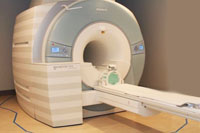 Rutgers University has just won an NSF Major Research Instrumentation Award to create a research-dedicated Neuroimaging center lead by Stephen J. Hanson with Bart Krekelberg and Mauricio Delgado. The $1.8M$ award will be used to acquire a Siemens TRIO 3T MRI scanner for a Brain Imaging Center that will be called RUBIC (Rutgers Brain Imaging Center). Rutgers University has just won an NSF Major Research Instrumentation Award to create a research-dedicated Neuroimaging center lead by Stephen J. Hanson with Bart Krekelberg and Mauricio Delgado. The $1.8M$ award will be used to acquire a Siemens TRIO 3T MRI scanner for a Brain Imaging Center that will be called RUBIC (Rutgers Brain Imaging Center).
|
|

|
 The Power of Study and Testing Spacing The Power of Study and Testing Spacing
The relationships between study and testing have been tackled by many and, as one scientist famously said, “The goal is the most learning from the least study.” Ah but that happy outcome has proven to be elusive.
Several TDLC researchers are on the trail of this core component of a prime Center initiative: “The Temporal Dynamics of the World: How does the relative timing of learning episodes (spacing effects), sequence dependencies within episodes, and feedback influence the effectiveness of learning and duration of memory?” More 
|
Decision making influences the neural dynamics associated with rewarded learning
Collaborators: David A. Peterson, Daniel T. Lotz, Eric Halgren, Terrence Sejnowski, and Howard Poizner (In NeuroImage: September 25, 2010)
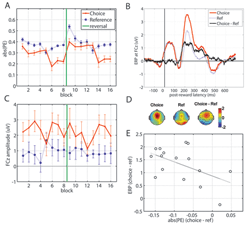
The amplitude of the event-related potential (ERP) approximately 200 ms after reward feedback is higher after decisions than after otherwise equivalent decision-free reference trials involving the same stimuli, motor responses, and probabilistic rewards. This differential ERP was negatively correlated with the differential influence of decisions on the prediction error magnitude.
More 
|
|
|
|
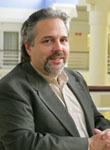 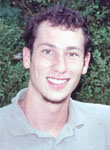
Neurons cast votes to guide decision-making
Collaborators: Braden Purcell, Jeffrey Schall, Thomas Palmeri
"We know that casting a ballot in the voting booth involves politics, values and personalities. But before you ever push the button for your candidate, your brain has already carried out an election of its own to make that action possible." New research from Vanderbilt University reveals that our brain accumulates evidence when faced with a choice and triggers an action once that evidence reaches a tipping point. More (From Vanderbilt News,
October 8, 2010) (From Vanderbilt News,
October 8, 2010) |
 Decoding the disease that perplexes: Salk scientists discover new target for MS (Salk Institute for Biological Studies press release, Oct. 25, 2010) Decoding the disease that perplexes: Salk scientists discover new target for MS (Salk Institute for Biological Studies press release, Oct. 25, 2010)
Findings from a study led by TDLC Co-Director Terrence J. Sejnowski and his team at the Salk Institute "provide fresh insights into the mechanisms underlying MS and suggest a novel target for therapeutic intervention."
More
|
|
 |
Featured Scientists:
Dr. Howard Poizner, Director of The Poizner Lab
TDLC Member, Sensory Motor Network (SMN) leader
 What is 'unsupervised learning'? What can it tell scientists about brain plasticity, and how does the Poizner Motion Capture Lab study this form of learning? What is 'unsupervised learning'? What can it tell scientists about brain plasticity, and how does the Poizner Motion Capture Lab study this form of learning?
One goal of our lab is to identify neural and cognitive processes underlying natural exploration, movement, and spatial learning / navigation. Our focus is on 'Unsupervised learning' - that is, how subjects learn about the world through self-exploration rather than through explicit instruction.
Using our Motion Capture Lab, subjects navigate through virtual towns while we record their movements and their EEG. We study how both of these patterns change over the course of learning. In conjunction with several other lines of research, we will be able to build up information about the neurobiology underlying unsupervised learning. We will be able to understand the brain patterns and their relation to the changes in action and exploration patterns over the course of learning. Virtual environments are very powerful tools because we have total control over the environment. We can gain insight into the nature of the representations that subjects form of the world by, for example, altering the world once it has been learned, seeing how the movement pattern has been changed and how the neural pattern has been changed. Thus, we can see how subjects are able to generalize their knowledge to new situations, and we can see how the neural dynamics change in response to novel inputs." |
|
This message was sent from:
The Temporal Dynamics of Learning Center (TDLC.UCSD.EDU)
University of California, San Diego,
9500 Gilman Drive, La Jolla, CA 92093
To learn more about TDLC, please visit us on the web at: TDLC.UCSD.EDU
Please contact webmaster@tdlc.ucsd.edu to unsubscribe.
TDLC is a Science of Learning Center (SLC),
one of six SLCs funded by the National Science Foundation. NSF grant #SBE-0542013
|
|
 |
Nov. / Dec. 2010
|
|
 |
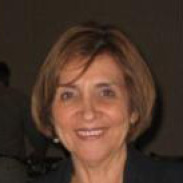
TDLC's The Educator Network
Discussion about recent white paper:
Rethinking Student Motivation:
Why understanding the ‘job’ is
crucial for improving education
Michael Horn has adapted a white paper from his book, Disrupting Class: How Disruptive Innovation Will Change the Way the World Learns. This paper places student motivation to learn in a model that draws from their research on innovation. Michael Horn proposes that motivation to learn is similar to "buying" a product. He suggests that many students are not "buying" what is offered.
 Link to White Paper Link to White Paper
|
|
|
 |
 |
Javier Movellan was recently interviewed in Wired
|
 |
Dr. April Benasich interviewed for The Science Network
|
 |
Computer games help autistic children read faces
Dr. Jim Tanaka and Marni Bartlett's collaborative work featured in the Pittsburgh Post-Gazette
(Sept. 2010)
|
 |
The Ultimate Block Party was a success
TDLC co-sponsored The Ultimate Block Party, an event that took place in New York's Central Park on Oct. 3, 2010, for families, educators and public figures to explore the real power of play. The event was a huge success, with over 50,000 people attending.
TSN Video
|

|
Healthy ears actually emit sounds
 In amphibians, reptiles, birds, and mammals, one to several tones can be heard when scientists use a microphone to record in a quiet environment. These
sounds are usually very soft, but can occasionally be heard by others. In amphibians, reptiles, birds, and mammals, one to several tones can be heard when scientists use a microphone to record in a quiet environment. These
sounds are usually very soft, but can occasionally be heard by others.
Surprisingly, the person whose ear is emitting the sounds rarely hears the sounds! There is still a question about what causes these sounds. Some scientists feel they are due to input from the central nervous system.
|
Coming in the next issue: NEW Trainees, who, where and more |
|
|
 |

![]()
